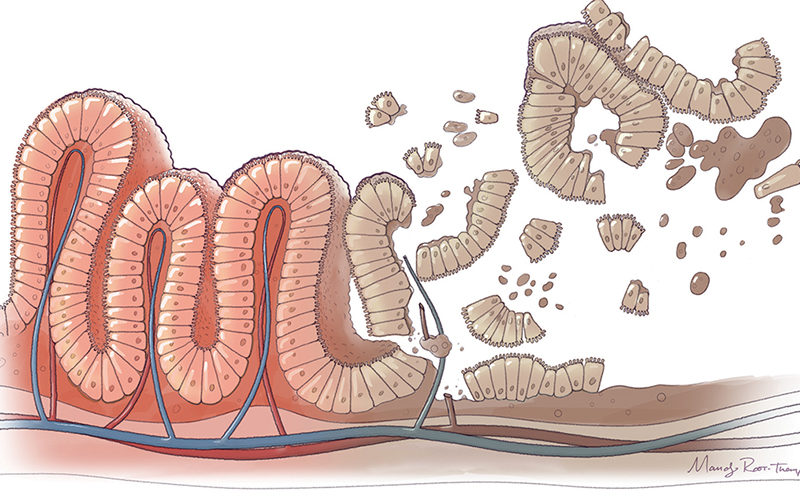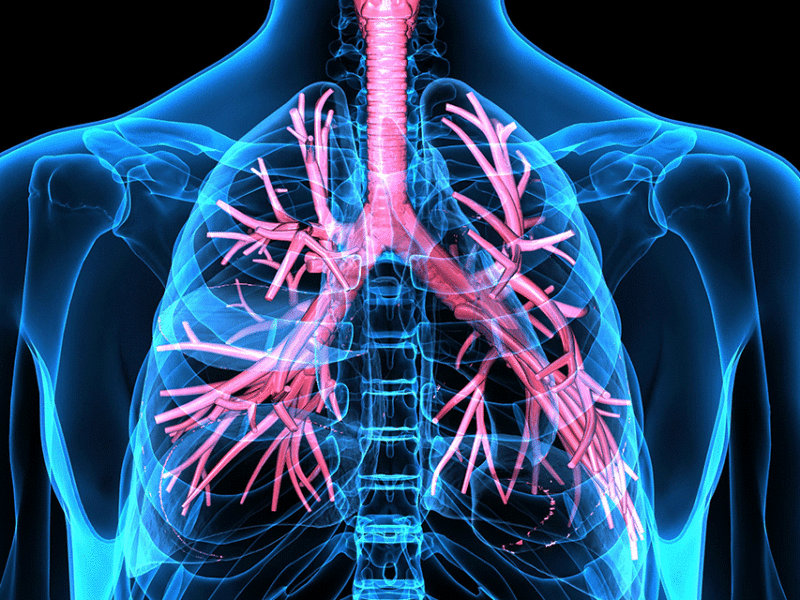Mechanism of Bacterial Adhesion to Platelets Revealed
Mechanism of Bacterial Adhesion to Platelets Revealed https://pediatricsnationwide.org/wp-content/themes/corpus/images/empty/thumbnail.jpg 150 150 Tiasha Letostak, PhD Tiasha Letostak, PhD https://pediatricsnationwide.org/wp-content/uploads/2021/03/Tiasha-Letostak.jpg- March 07, 2017
- Tiasha Letostak, PhD
Researchers investigate a key protein required to bind two distinct receptors on the bacteria Streptococcus oralis involved in infective endocarditis.
Infective endocarditis (IE) is an infection of the endocardium, usually of the valves, and is caused by infectious agents that are typically bacterial. Understanding how these bacterial infections occur is important to the prevention, treatment and management of IE. A recent study from Nationwide Children’s Hospital is the first to demonstrate how a key protein is required to bind two distinct receptors on the bacteria, Streptococcus oralis, which is involved in IE.
“Sub-acute infective endocarditis is an important but understudied disease,” says Samantha J. King, PhD, principal investigator in the Center for Microbial Pathogenesis in The Research Institute at Nationwide Children’s Hospital, and senior author of the study, which was published in the journal Infection and Immunity. “Bacteria that cause this disease are typically commensal and little is understood about how they cause disease.”
Dr. King and her team conducted this study as an extension of their previous work with Streptococcus pneumoniae, which lead to some unexpected and interesting findings.
“We had recently defined a novel mechanism of binding by which the pneumonia pathogen, Streptococcus pneumoniae, binds to a specific linkage of galactose on host cells,” explains Dr. King. “As Streptococcus oralis encodes a protein that could potentially bind the same sugar, we extended our study to see if this mechanism was conserved across bacterial species.”
What was interesting, notes Dr. King, is that S. oralis binds this same sugar, but in a completely different way. This result piqued her team’s interest, and led her lab to conduct extensive research in this area.
“This study utilized defined mutants in S. oralis and platelet binding assays,” says Dr. King. “We allowed binding of bacteria to these platelets under different conditions and assess how different mutations or treatments increase or reduce binding.”
There were a number of different conditions that Dr. King and her team utilized to examine cause and effect:
- the use of bacterial strains with defined mutations to assess the contribution of different bacterial proteins or parts of proteins;
- the addition of enzymes that modify sugars on the platelet surface;
- the addition of sugars that can block binding by competing with sugar receptors on the platelet; and
- the addition of proteins that can reduce binding by competing with adhesin molecules on bacteria.
The research team found that S. oralis binds two carbohydrate structures on the surface of platelets: sialic acid and β-1,4 linked galactose. This binding occurs via a serine rich repeat protein known as Fap1.
“This is the first adherence mechanism defined for S. oralis,” explains Dr. King of the results. “S. oralis produces sugar-modifying enzymes, likely in order to release free sugar as an energy source. One of these enzymes removes the first receptor and exposes the second, indicating that S. oralis has developed strategies to maintain attachment to the host by binding multiple sugar structures.”
Although some other streptococci that cause endocarditis also bind platelets via a serine rich repeat protein, this is the first example of a serine rich repeat protein being required to bind two sugar structures, notes Dr. King. This raises the possibility that other serine rich repeat proteins bind multiple sugars as well.
With respect to future directions for her team’s research, Dr. King adds that there are two major paths that they are exploring.
“First, we need to understand the distribution of this adhesin,” says Dr. King. “While this is an interesting mechanism of binding to platelets, in order to be targeted to treat or prevent disease, it needs to be present in a significant percentage of endocarditis-causing isolates. Secondly, we are working to better understand how Fap1 mediates binding by defining this precise mechanism.”
Reference:
Singh AK, Woodiga SA, Grau MA, King SJ. Streptococcus oralis neuraminidase modulates adherence to multiple carbohydrates on platelets. Infection and Immunity. 2016 Dec 19 [Epub ahead of print].
About the author
Tiasha is the senior strategist for Clinical & Research Communications at Nationwide Children's Hospital. She provides assistance to investigators in The Research Institute and clinician-scientists at Nationwide Children’s for internal and external communication of clinical studies, peer-reviewed journal articles, grant awards and research news. She is also the editor-in-chief for Research Now, Nationwide Children's monthly, all-employee e-newsletter for research, as well as a writer for Pediatrics Nationwide.
-
Tiasha Letostak, PhDhttps://pediatricsnationwide.org/author/tiasha-letostak-phd/
-
Tiasha Letostak, PhDhttps://pediatricsnationwide.org/author/tiasha-letostak-phd/
-
Tiasha Letostak, PhDhttps://pediatricsnationwide.org/author/tiasha-letostak-phd/July 14, 2014
-
Tiasha Letostak, PhDhttps://pediatricsnationwide.org/author/tiasha-letostak-phd/September 3, 2014
- Post Tags:
- Center for Microbial Pathogenesis
- Posted In:
- In Brief







